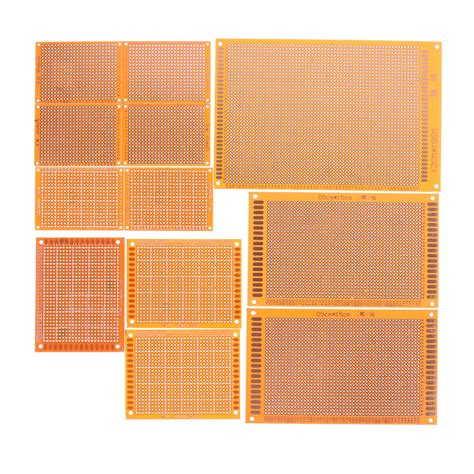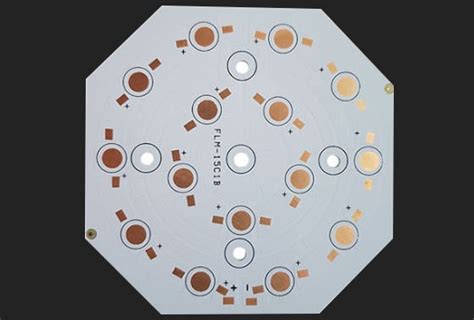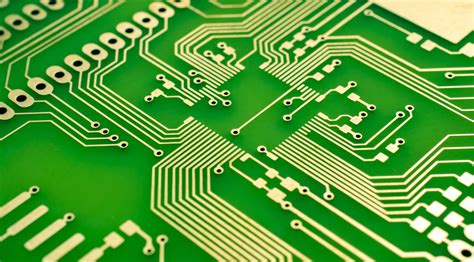Unlocking Innovation: The Ultimate Guide to Circuit Board Prototypes
Key Takeaways
Understanding circuit board prototypes is essential for anyone involved in the design and development of electronic products. The importance of prototyping in product development cannot be overstated, as it allows you to explore design ideas, validate concepts, and identify potential issues before committing to large-scale production. By engaging with different pcb manufacturing options, you can choose the right type of board—be it single-sided, double-sided, or multilayer—to suit your specific project needs.
Moreover, the effectiveness of your prototype heavily relies on efficient design techniques. Utilizing cutting-edge tools can make a significant difference in quality and performance while reducing overall costs associated with pcb manufacturing. Partnering with reliable pcb manufacturing companies can also expedite your project timelines and enhance prototype quality. However, keep in mind the overall pcb manufacturing cost, which can vary based on materials and complexities involved in your designs. Lastly, understanding the dynamics of the pcb manufacturing business is vital for navigating through pricing, lead times, and service offerings that align with your goals while ensuring an innovative outcome for your circuit board prototypes.
Introduction to Circuit Board Prototypes
In the realm of electronics, circuit board prototypes serve as a pivotal cornerstone in the product development cycle. These prototypes allow you to visualize and test your design concepts before committing to full-scale production, ultimately influencing the success of your pcb manufacturing projects. Whether you are an engineer, designer, or tech enthusiast, understanding the fundamentals of circuit board prototyping is crucial.
When exploring options with various pcb manufacturing companies, it’s vital to consider how their processes integrate advanced technologies to produce high-quality prototypes. The cost implications of prototyping can also vary significantly based on complexity and materials used; thus, it’s important to evaluate the pcb manufacturing cost against your budget.
This early stage in development is analogous to drafting a blueprint before constructing a building. Utilizing effective methods for rapid prototyping not only enhances flexibility but also minimizes risk as you experiment with different designs. As you navigate through different types of circuit boards—ranging from single-sided to multilayer—it’s essential to recognize that each choice may have different implications for your pcb manufacturing business model.
Here’s a simple comparison table that illustrates the types of circuit boards you might consider:
| Circuit Board Type | Description | Applications |
|---|---|---|
| Single-Sided | Components on one side only | Simple devices |
| Double-Sided | Components on both sides | More complex devices |
| Multilayer | Multiple layers for high density | Advanced tech applications |
“Prototyping allows you to iterate quickly, saving both time and resources in the long term.”
As you delve deeper into this process, remember that ever-evolving technologies in PCB production continue to shape how effectively you can achieve your design goals. Engage with experts or consider resources available at Andwin PCBA for further insights into optimizing your prototype development process.
By focusing on these early stages and their implications, you’ll position yourself to make informed decisions that align with innovation and quality standards essential in today’s fast-paced tech landscape.
The Importance of Prototyping in Product Development
In the realm of product development, the significance of prototyping cannot be overstated. Prototyping serves as a crucial bridge between initial concepts and final products. When you engage in pcb manufacturing, creating a prototype allows you to test and refine your ideas effectively. This stage helps identify potential issues early on, reducing the risk of costly errors later in the development cycle. By working with pcb manufacturing companies, you can access advanced materials and technologies that enhance your design’s feasibility while managing pcb manufacturing costs effectively.
Furthermore, prototyping not only aids in evaluating the technical aspects but also provides invaluable insights into user experience. Freezing your ideas into a tangible model reveals how your product performs in real-world scenarios, allowing for adjustments before mass production begins. For anyone involved in a pcb manufacturing business, understanding that prototypes can shape user feedback and enhance product functionality is essential. This strategic approach empowers you to innovate confidently, ensuring that the end product is not just functional but also meets market demands. Embracing this vital step in your development process will ultimately lead to higher success rates and lasting innovation within your projects.
Types of Circuit Boards: Single-Sided, Double-Sided, and Multilayer
When embarking on your journey in pcb manufacturing, understanding the different types of circuit boards is essential. At the most basic level, single-sided circuit boards are the simplest design, featuring components and conductive tracks on one side only. This design is primarily used in less complex applications where cost efficiency is paramount. Conversely, double-sided circuit boards facilitate greater functionality by allowing components and traces on both sides. This type is particularly advantageous for more intricate designs, as it can significantly reduce wiring complexity while maintaining a compact form factor.
For projects requiring higher density and functionality, multilayer circuit boards are the best choice. These structures consist of several layers of conducting material separated by insulating layers, which allow for complex circuits within a relatively small area. They are prevalent in advanced electronics such as smartphones and computers where performance and space efficiency are crucial.
When considering your options among different pcb manufacturing companies, it’s important to factor in not just the pcb manufacturing cost, but also the level of technological capability they offer. Efficient prototyping techniques can allow you to experiment with designs without incurring prohibitive expenses, ultimately advancing your pcb manufacturing business objectives. By selecting the right type of circuit board suited to your project needs, you can optimize functionality while managing costs effectively. Understanding these distinctions equips you with the knowledge necessary to navigate the complexity of prototype development successfully.
Techniques for Efficient Circuit Board Design
When embarking on the journey of circuit board design, it’s critical to implement techniques that enhance efficiency and reduce costs. One of the first steps in optimizing your approach is to familiarize yourself with PCB manufacturing processes. Understanding the range of services offered by various PCB manufacturing companies can lead you to choose the best options for your specific needs. Begin by leveraging specialized software that aids in layout design and simulation; this can help you visualize your circuit before production, minimizing costly mistakes.
Another essential aspect is to standardize your components wherever possible. By utilizing commonly available parts, you can reduce the overall PCB manufacturing cost as suppliers often offer better rates for bulk orders. Furthermore, efficient routing and minimizing layer counts without sacrificing functionality can significantly streamline the production process.
Choosing the right type of circuit board also plays a vital role in design efficiency. Whether you opt for single-sided, double-sided, or more complex multilayer boards, each has implications on both performance and cost, making careful selection key to efficiency. Collaborating closely with your chosen PCB manufacturing business will ensure that you have insights on best practices and potential pitfalls, enabling a smoother transition from concept to prototype. By employing these techniques and maintaining a flexible design mindset, you will foster innovation while ensuring that your projects are completed on time and within budget.
Rapid Prototyping: Methods and Advantages
When it comes to circuit board prototypes, rapid prototyping plays a pivotal role in bringing your designs to life quickly and efficiently. Utilizing various methods such as 3D printing, CNC machining, and laser cutting, you can create functional PCBs in a fraction of the time compared to traditional methods. This speed not only fosters innovation but also allows for iterative testing and refinement of your designs, ensuring that any potential issues are addressed early in the process.
One of the significant advantages of rapid prototyping is its capability to significantly reduce PCB manufacturing costs. By utilizing cost-effective materials and efficient techniques, you can minimize waste while maximizing output. Furthermore, engaging with reputable PCB manufacturing companies that specialize in rapid prototyping ensures that you receive high-quality prototypes that meet your project specifications.
This approach is particularly beneficial for startups or smaller PCB manufacturing businesses that may not have the extensive resources of larger companies. It provides a streamlined process, allowing you to validate your designs without committing to large-scale production upfront. As you navigate through the myriad of options available in rapid prototyping, you’ll find that investing in these methods not only enhances product development timelines but also encourages creativity within your team, positioning you favorably in a competitive market.
Advanced Manufacturing Technologies in PCB Production
In today’s fast-paced technological landscape, pcb manufacturing has evolved significantly due to advanced manufacturing technologies. These innovations cater to the increasing demands for complexity, miniaturization, and efficiency in electronic components. You will find that pcb manufacturing companies are leveraging sophisticated techniques such as automated assembly, laser cutting, and advanced imaging technologies to expedite production and enhance precision. This not only streamlines the design phase but also effectively reduces the pcb manufacturing cost associated with traditional methods. For instance, with the rise of digital fabrication, you can achieve rapid prototyping that facilitates multiple iterations of your design without incurring hefty expenditures. Moreover, advancements in materials and processes enable a wider variety of designs, from single-sided boards to complex multilayer configurations. As you explore opportunities within the pcb manufacturing business, understanding these technological advancements will empower you to create high-quality prototypes that not only meet industry standards but also foster your innovative spirit. By embracing these technologies, you position yourself at the forefront of an ever-evolving industry landscape.
Testing and Validation: Ensuring Quality in Prototypes
To achieve successful outcomes in your circuit board prototyping process, testing and validation are indispensable stages that ensure the quality and performance of your designs. By engaging in thorough testing, you can identify potential faults and improve the overall reliability of your prototype before moving into full-scale production. This task becomes even more critical when you consider the various types of PCB manufacturing methods available, each with its own strengths and potential pitfalls. For instance, understanding the manufacturing cost can help you weigh the options among different PCB manufacturing companies, balancing budget constraints with specifications.
Employing a structured approach to validation allows you to confirm that the prototype functions as intended under various environmental conditions and usage scenarios. Techniques such as thermal cycling, mechanical stress testing, and electrical validation are vital to ensure that your design can withstand real-world applications. Furthermore, utilizing advanced technologies within modern PCB manufacturing business practices enables faster iterations of prototypes, allowing engineers and designers like yourself to optimize designs efficiently without incurring prohibitive costs. Remember that validating early prototypes not only enhances quality but also fosters a culture of innovation by minimizing risks during product development phases.
Empowering Innovation: Best Practices for Successful Prototyping
To excel in your pcb manufacturing endeavors, embracing a series of best practices is vital. First, ensure that you are working in close collaboration with your team and stakeholders from the outset. This collaborative approach helps to establish clear objectives and expectations, which can significantly streamline your prototyping process. When considering design intricacies, remember the importance of leveraging advanced tools that specialize in simulating circuit behavior. Such tools can help avoid costly mistakes early on in the design phase.
Don’t hesitate to explore various pcb manufacturing companies that can meet your specific needs, from simple prototypes to complex multilayer boards. The right partner can greatly influence not only the pcb manufacturing cost but also the speed at which you can bring your concepts to life. Understanding the differences between single-sided and double-sided boards is crucial when choosing materials and layout; using multilayer options may allow for more compact designs but comes with its own set of challenges.
In addressing testing and validation, create a structured plan that systematically evaluates each prototype iteration against predefined criteria. This methodology will not only help identify areas for refinement but also ensure that you are adhering to industry standards throughout your pcb manufacturing business. With diligent testing, feedback loops evolve into actionable insights, ultimately leading to more resilient designs and increased innovation in your projects. As you embrace these best practices, you’ll find yourself empowering innovation at every step of the prototyping journey.
Conclusion
In the dynamic world of technology, understanding the intricacies of pcb manufacturing is essential for anyone involved in product development. By grasping the fundamentals, you can navigate through the complexities of pcb manufacturing companies that vary in size and capability, ensuring you make informed choices that resonate with your project goals. It’s crucial to evaluate the pcb manufacturing cost, as it often influences design decisions and timelines. When building your pcb manufacturing business, prioritizing quality and innovation will set you apart from competitors. By leveraging advanced techniques and embracing continuous learning, you can enhance your prototyping process significantly. Remember, successful projects are born not just from great ideas but from effective execution in production; investing time in mastering these elements will empower you to push the boundaries of technology and innovation.
FAQs
When delving into circuit board prototypes, you may have several questions about the underlying processes, particularly regarding PCB manufacturing. Understanding the landscape of PCB manufacturing companies is crucial because they provide varied services essential for your projects. It’s important to consider the PCB manufacturing cost, which can significantly differ among providers based on materials, complexity, and order volume.
For instance, if you’ve designed a complex multilayer circuit board, some PCB manufacturing business setups might offer you competitive pricing while ensuring high quality and quick turnarounds. Additionally, you may wonder about the steps involved in selecting a reliable manufacturer—look for companies with strong industry reputations and robust capabilities.
Furthermore, knowing what to expect from your chosen company regarding production timelines and support can help streamline your project development process. As you navigate these considerations, remember that making informed decisions about PCB manufacturing will not only enhance your project outcomes but also foster your innovative spirit as you unlock new potential in your designs.






